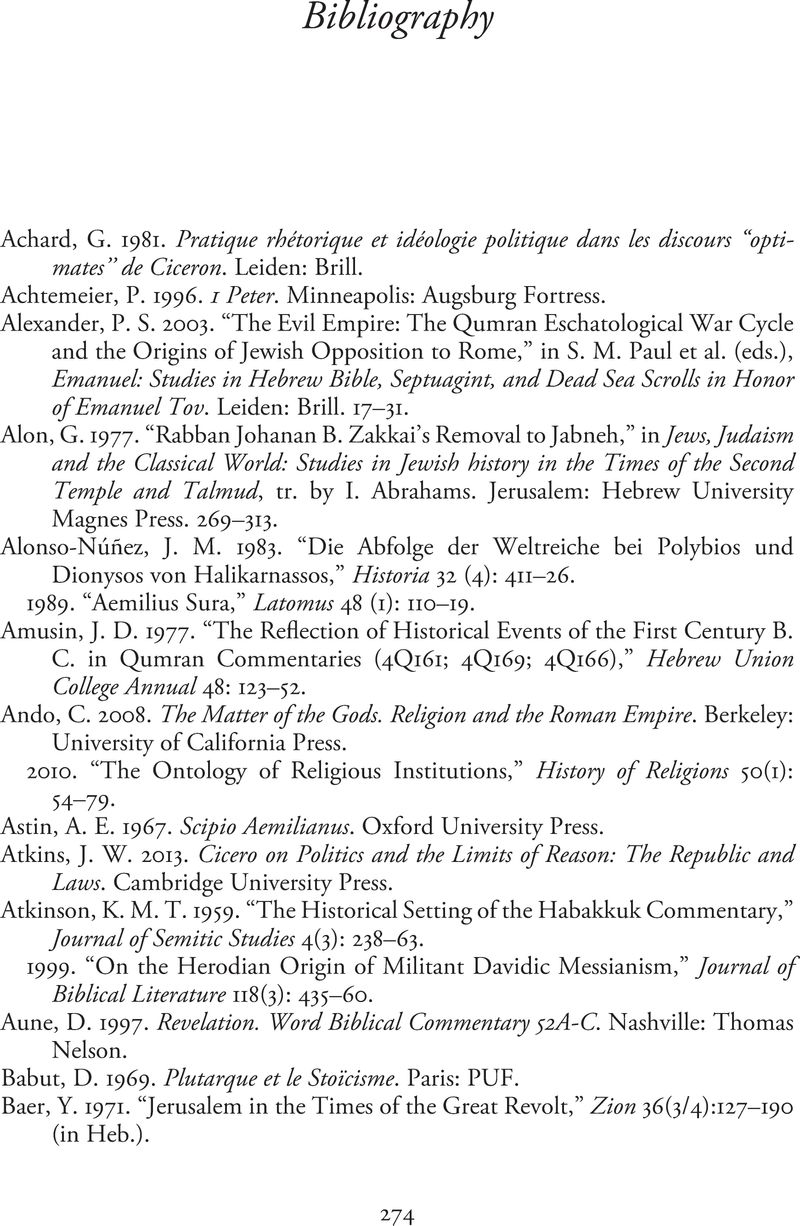Book contents
- The Future of Rome
- The Future of Rome
- Copyright page
- Contents
- Contributors
- Acknowledgments
- Abbreviations
- Introduction
- Chapter 1 Some Remarks on Cicero’s Perception of the Future of Rome
- Chapter 2 Eclogue 4 and the Futures of Rome
- Chapter 3 Imperium sine fine: Rome’s Future in Augustan Epic
- Chapter 4 Posterity in the Arval Acta
- Chapter 5 The Future of Rome in Three Greek Historians of Rome
- Chapter 6 Philo on the Impermanence of Empires
- Chapter 7 From Human Freedom to Divine Intervention
- Chapter 8 Josephus, Caligula and the Future of Rome
- Chapter 9 “Will This One Never Be Brought Down?”
- Chapter 10 The Sibylline Oracles and Resistance to Rome
- Chapter 11 Revelation 17.1–19.10: A Prophetic Vision of the Destruction of Rome
- Chapter 12 Cicero and Vergil in the Catacombs: Pagan Messianism and Monarchic Propaganda in Constantine’s Oration to the Assembly of Saints
- Chapter 13 The Future of Rome after 410 CE
- Appendix
- Bibliography
- Index Locorum
- Index of Names and Places
- References
Bibliography
Published online by Cambridge University Press: 24 September 2020
- The Future of Rome
- The Future of Rome
- Copyright page
- Contents
- Contributors
- Acknowledgments
- Abbreviations
- Introduction
- Chapter 1 Some Remarks on Cicero’s Perception of the Future of Rome
- Chapter 2 Eclogue 4 and the Futures of Rome
- Chapter 3 Imperium sine fine: Rome’s Future in Augustan Epic
- Chapter 4 Posterity in the Arval Acta
- Chapter 5 The Future of Rome in Three Greek Historians of Rome
- Chapter 6 Philo on the Impermanence of Empires
- Chapter 7 From Human Freedom to Divine Intervention
- Chapter 8 Josephus, Caligula and the Future of Rome
- Chapter 9 “Will This One Never Be Brought Down?”
- Chapter 10 The Sibylline Oracles and Resistance to Rome
- Chapter 11 Revelation 17.1–19.10: A Prophetic Vision of the Destruction of Rome
- Chapter 12 Cicero and Vergil in the Catacombs: Pagan Messianism and Monarchic Propaganda in Constantine’s Oration to the Assembly of Saints
- Chapter 13 The Future of Rome after 410 CE
- Appendix
- Bibliography
- Index Locorum
- Index of Names and Places
- References
Summary

- Type
- Chapter
- Information
- The Future of RomeRoman, Greek, Jewish and Christian Visions, pp. 274 - 297Publisher: Cambridge University PressPrint publication year: 2020



